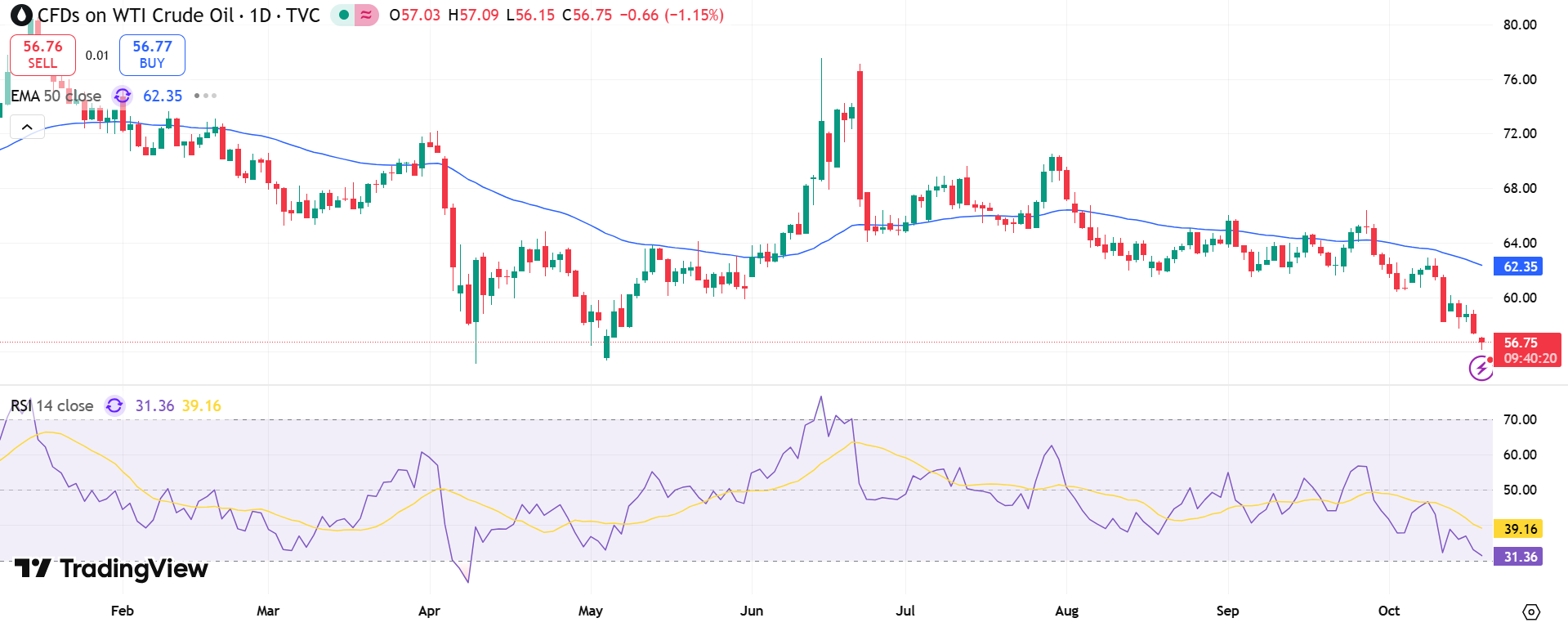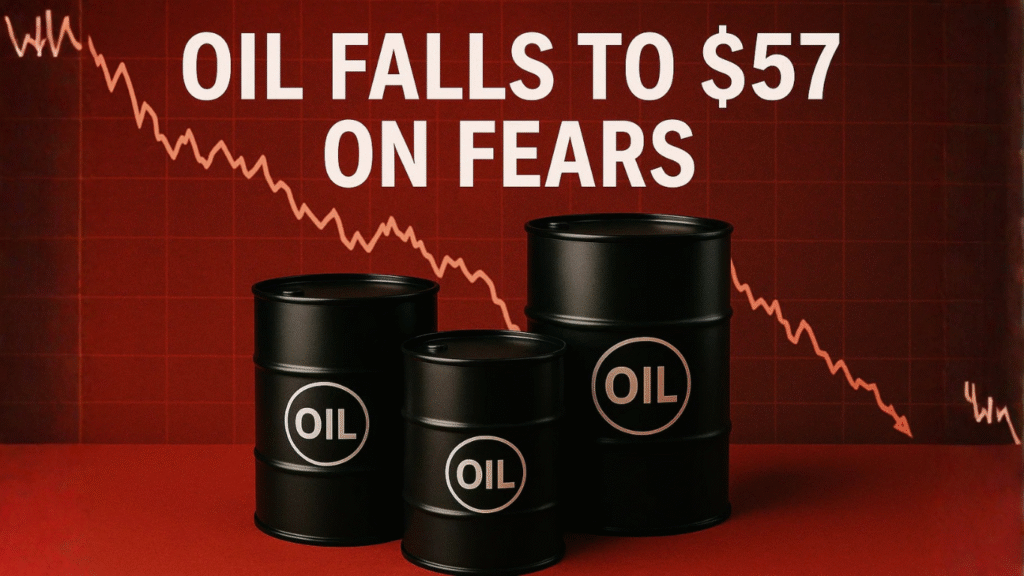Oil prices dropped to their weakest levels since May, with both Brent and WTI crude sliding amid renewed geopolitical developments and persistent concerns about demand. In Friday’s Asian trading, Brent futures dipped 0.2% to $60.95 a barrel, while West Texas Intermediate (WTI) fell 0.2% to $57.36, extending a three-week losing streak.
The downturn followed news that U.S. President Donald Trump and Russian President Vladimir Putin agreed to meet in Budapest to discuss possible steps toward ending the Ukraine war. Any progress toward a ceasefire could bring more Russian oil back to global markets, potentially easing sanctions and aggravating an already heavy supply outlook.
Trump’s announcement came just before his planned call with Ukrainian President Volodymyr Zelensky, adding diplomatic weight to an otherwise uncertain geopolitical landscape. Analysts say even a hint of détente could depress prices further by reducing geopolitical risk premiums.
Oversupply Risks and Weak Demand Weigh
Oil markets are contending with several bearish factors, from rising inventories to weakening demand signals. U.S. government data showed crude inventories rising by 3.5 million barrels last week, far above expectations, eroding hopes for a near-term rebound.
At the same time, economic data from China—the world’s largest oil importer—has continued to underwhelm, reinforcing worries about slowing global consumption. The International Energy Agency (IEA) added to the gloom this week, forecasting a larger supply overhang by 2026 and warning that demand growth is deteriorating faster than expected.
Key bearish factors pressuring prices include:
- Rising U.S. crude stockpiles, up 3.5 million barrels last week
- Weak Chinese economic data and falling industrial output
- Potential easing of sanctions on Russian oil exports
- Persistent trade tensions between Washington and Beijing

Market Skepticism on Trump-Putin Outcome
Despite optimism in some quarters, traders remain skeptical that any meaningful ceasefire or sanctions relief will emerge from the Trump-Putin talks. Their last meeting in August produced no tangible progress, and uncertainty lingers over both leaders’ ability to broker a durable deal.
For now, crude remains under pressure from a toxic mix of oversupply risks, softening global demand, and diplomatic ambiguity. Brent and WTI are both down nearly 3% this week, marking their third straight weekly loss. Unless demand stabilizes or output curbs return, analysts warn prices could test new multi-month lows in the sessions ahead.


